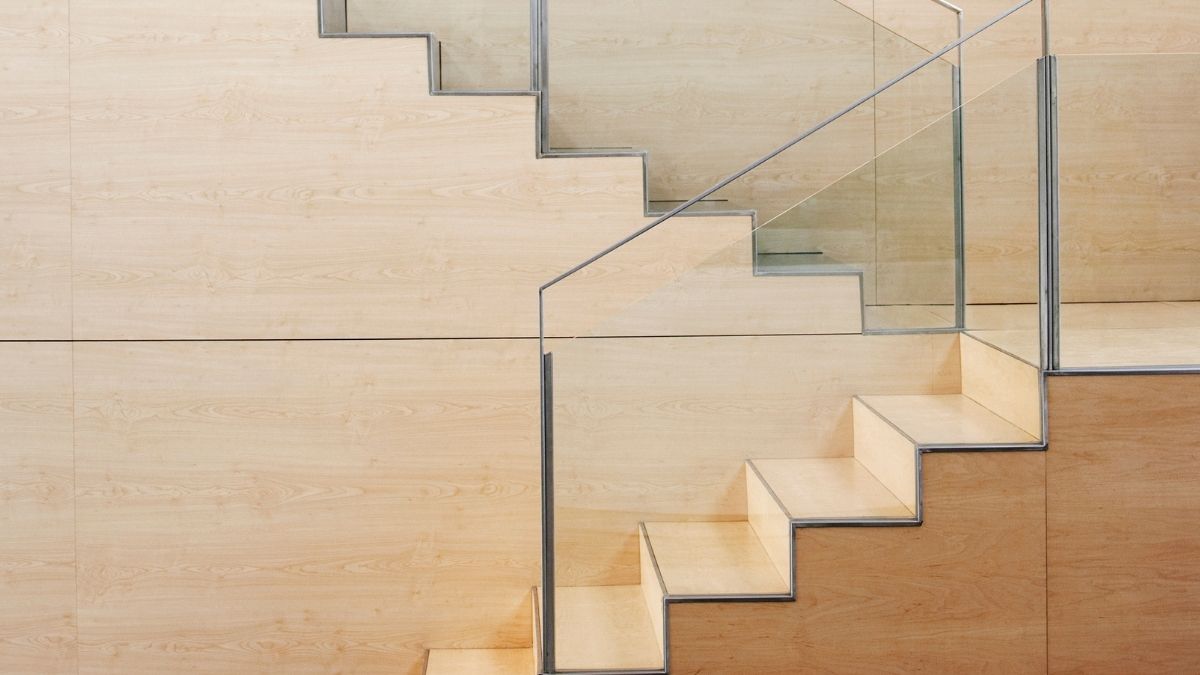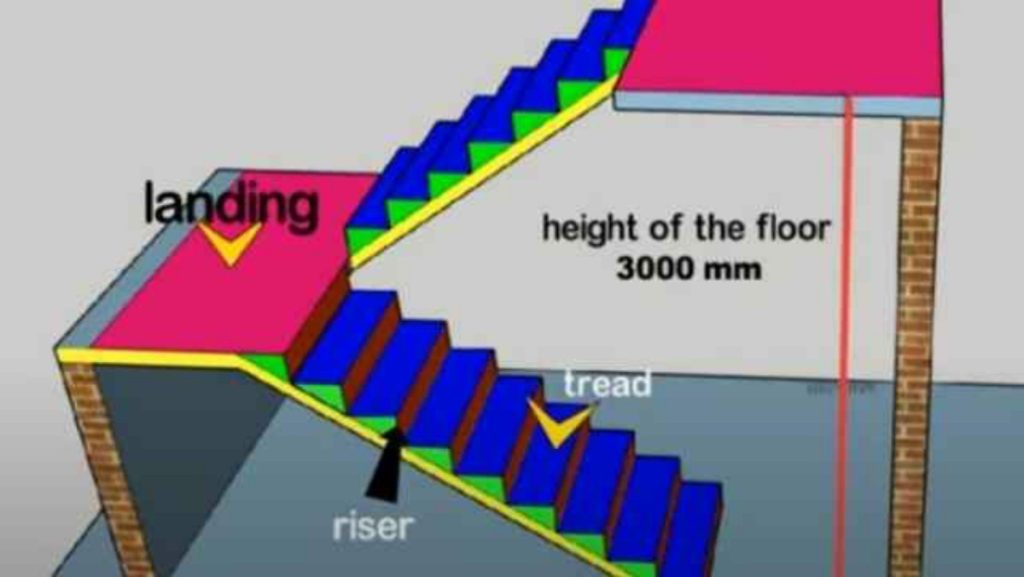A dog-legged staircase is the simplest, common, space-saving, and economical staircase type used in commercial, industrial and residential buildings. A dog-legged staircase consists of two flights running in opposite directions and parallel to each other. They are separated categorically by a landing when the flights change direction.
This article is about the features of Dog legged staircase and its design, advantages, disadvantages, and applications.
What is a staircase?
A stair is a structure with a series of steps meant to provide a simple and easy means of ascending and descending between levels or floors. The room or enclosure of the building, that occupies the stairs are known as a staircase.
Also read : What is prefabrication in construction?
Dog legged staircase
A dog-legged staircase is a simple and economical staircase type used in construction. The flight ascends to a half landing and turns right angle, and further ascends upward to the floor for these types of staircases. They consists of two flights running in opposite directions separated by a landing where the flights change direction. The flights may or may not be equal and depend on the height and proposed riser heights. Due to its resemblance with that of a dog’s leg in sectional elevation, these stairs are called dog-legged staircases. The flights may or may not be equal and depend on the height and proposed riser heights.
Major components of a Dog legged staircase
Let us go through the major components of a Dog legged Staircase
Thread
Horizontal portion where the foot rests while ascending and descending.
Rise
Risers are vertical portion between two threads.
Step
Each step constitutes a tread and a riser and individual steps form a stair.
Landing
Landing is an intermediate space between a series of steps (Flights) . This spaces serves primarily as a resting place and enables a smooth direction change.
Newel post
The vertical post at the starting and end of a stair
Baluster
Balusters are Vertical members fixed along the flight for supporting hand rails
Handrail
An inclined rail provided at an optimum height which can support while ascending and descending.
Advantages of Dog legged staircase
From the design point of view the main advantages are as follows
- To allow an arrangement that occupies a shorter, though wider, floor area than a straight flight, and so is more compact. Even though the landings consume total floor space, there is no large single dimension.
- The upper floor is not directly visible from the bottom of the stairs, thereby providing more privacy.
- The space below landings serves the purpose of storage.
- The design and layout is very simple.
- Landings offer a comfortable resting space for commuters.
- They requires less area and limited space when compared with other stairs like straight staircase .
Disadvantages of Dog legged Staircase
- The construction of these stairs are not easy
- The handrails need very careful planning.
Features of a good staircase
- Staircase location selection has to ensure sufficient light and ventilation and easy access from all the rooms.
- A single flight should have a minimum of three risers and a maximum of 16 risers.
- Stair angles (Pitch) should be anywhere between 25 degrees to 40 degrees. Landings have to be provided categorically to manage the pitch.
- The landing width should not be less than the width of the stair flight.
- The riser height should be uniform for all flights between landings and floors for maintaining a rhythm while ascending and descending.
Design of Dog legged Staircase
How to design a staircase ?
Available dimensions
Height of Floor = 3 mtr (Floor to Floor)
Step 1
How to find the Number of Risers
Maximum height of Riser is 190 mm : Assume 175 mm as riser height
Total number of risers = 3000/175 = 17.14 risers say 17
Riser height assuming 17 risers = 3000/17 = 176.47 mm
Thread = Riser – 1 = 17-1 = 16 nos
Input details
Riser = 17 nos ( 17.47 mm)
Thread =16 nos (250 mm)
For first landing will take 9 Riser and 8 thread


